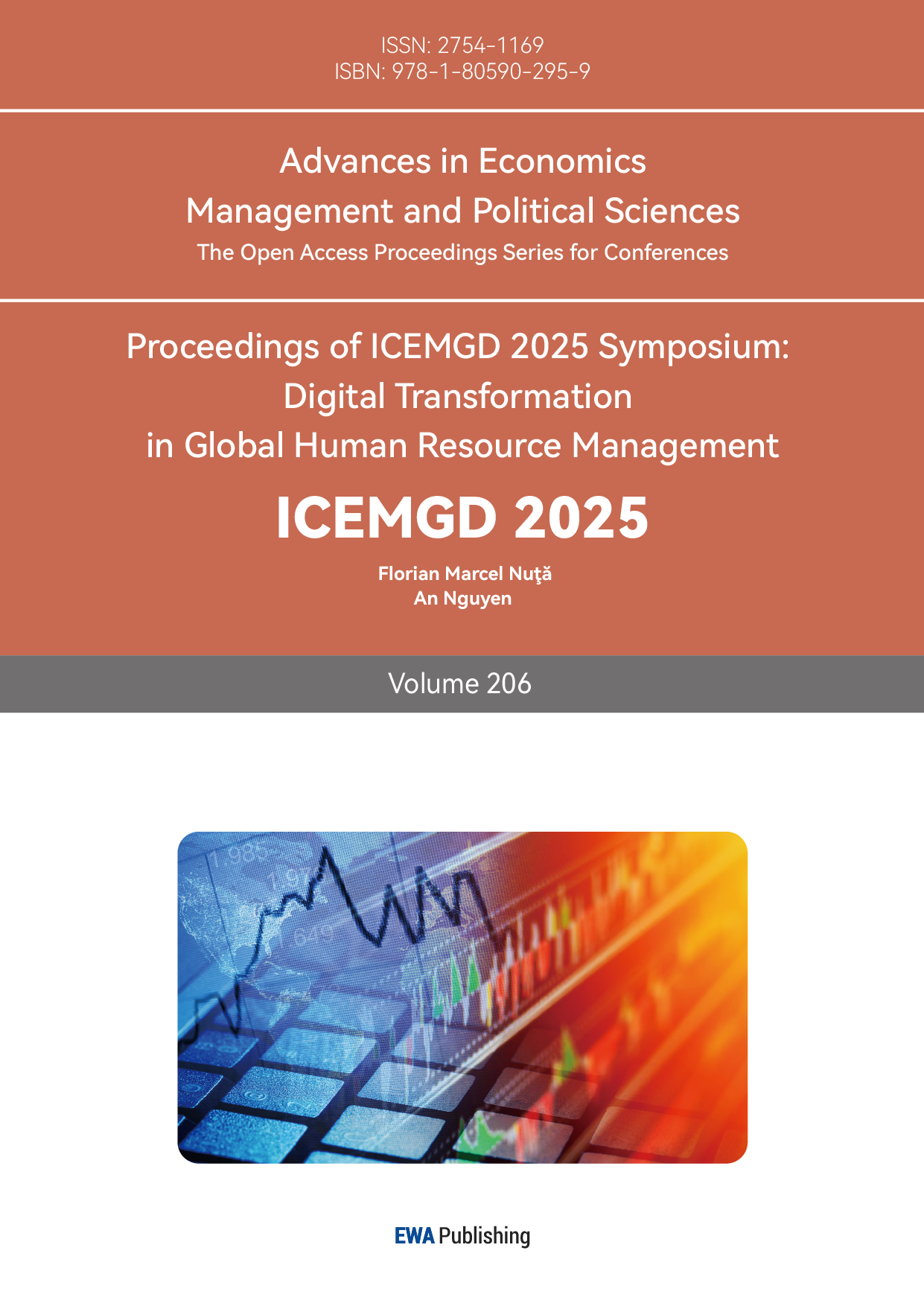References
[1]. "Advancing Agricultural Modernization and Building a Strong Agricultural Country - A Review of Implementing the Spirit of the National Two Sessions (IV)". Rolling News, Chinese Government Network. Accessed: Feb. 21, 2025.
[2]. China Academy of Information and Communications Technology. China Digital Economy Development Report (2022) [EB/OL]. [Accessed: Feb. 21, 2025].
[3]. Liu, C. K., Cheng, Z. T., & Wei, J. Q. (2024). Digital inclusive finance and agricultural green development under the background of rural revitalization. Qinghai Social Sciences, No. 3, 117–129. doi: 10.14154/j.cnki.qss.2024.03.020
[4]. Du, J. J., Zhang, Y. D., Liu, B. M., & Dong, R. H. (2023). The impact of digital villages on agricultural green total factor productivity and its mechanism. China Population, Resources and Environment, Vol. 33, No. 2, 165–175.
[5]. Li, Y. X., & Xiang, S. (2024, October). Research on the impact of digital technology development on the green total factor productivity of grain. Chinese Journal of Agricultural Resources and Regional Planning, 1–10.
[6]. Zhang, J. C., & Wang, J. M. (2024). Digital inclusive finance, low - carbon agricultural production, and green total factor productivity. Journal of Harbin University of Commerce (Social Science Edition), No. 5, 16–25.
[7]. Tian, Y. (2017). Favorable conditions for the integration of urban and rural commercial circulation in China and its development countermeasures. Reform & Strategy, Vol. 33, No. 7, 156–158. doi: 10.16331/j.cnki.issn1002 - 736x.2017.07.042
[8]. Wen, Z. L., & Ye, B. J. (2014). Analysis of mediating effects: Development of methods and models. Advances in Psychological Science, Vol. 22, No. 5, 731–745.
[9]. Liu, Z. K., & Xin, L. (2018). The impact of the Belt and Road Initiative on the green total factor productivity of key Chinese provinces along the route. China Population, Resources and Environment, Vol. 28, No. 12, 87–97.
[10]. Guo, F., Wang, J. Y., Wang, F., Kong, T., Zhang, X., & Cheng, Z. Y. (2020). Measuring the development of digital inclusive finance in China: Index compilation and spatial characteristics. China Economic Quarterly, Vol. 19, No. 4, 1401–1418. doi: 10.13821/j.cnki.ceq.2020.03.12
[11]. Zhou, Y. H., Qiu, Z. X., Jiang, S. S., & Liu, M. (2024). Digital economy development and rural common prosperity: A collaborative perspective of e - commerce and digital finance. Economic Research Journal, Vol. 59, No. 7, 54–71.
[12]. An, H. X. (2024). Impact mechanism and spatial spillover effect of digital inclusive finance on agricultural green total factor productivity. Jiangsu Agricultural Sciences, Vol. 52, No. 18, 288–296. doi: 10.15889/j.issn.1002 - 1302.2024.18.036
[13]. Gong, S. Y., Wang, B., & Yu, Z. G. (2023). Business environment, Internet - based government services, and agricultural total factor productivity. Statistics & Decision, Vol. 39, No. 8, 147–152. doi: 10.13546/j.cnki.tjyjc.2023.08.026
[14]. Liu, H. Y., Wang, L. X., & Wang, X. F. (2024). Cross - border e - commerce and the total factor productivity of export enterprises. World Economy Study, No. 7, 43–57, 134–135. doi: 10.13516/j.cnki.wes.2024.07.009
[15]. Cong, H. B., Huang, P., Zou, D. L., & Zhu, X. Z. (2024). Impact of rural e - commerce in the Yangtze River Delta counties on farmers' income increase from the perspectives of entrepreneurship and employment. Economic Geography, Vol. 44, No. 12, 53–61. doi: 10.15957/j.cnki.jjdl.2024.12.006
[16]. Tang, L., Tang, Y. H., & Yang, Q. J. (2024). Rural e - commerce, digital inclusive finance, and urban - rural common prosperity. Comparative Economic and Social Systems, No. 4, 95–110.
[17]. Deng, J. Q., & Gu, Y. (2024, December). Does digital inclusive finance promote rural revitalization in county - level areas? Western Forum, 1–15.
[18]. Hao, L., & Liu, J. B. (2022). The impact of digital inclusive finance on income inequality - Testing the mediating effect based on the digital divide. Journal of Beijing Vocational College of Economics and Management, Vol. 37, No. 3, 71–80.



